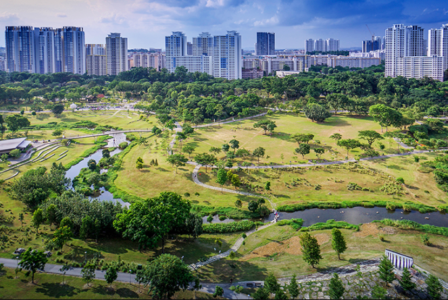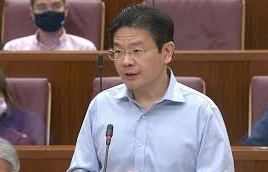Exploring the Unique and Energetic Routines That Keep Elderly Singaporeans Active at the Crack of Dawn
It’s 7 AM at Bishan-Ang Mo Kio Park, and I feel like I’m already late to the party. The warm glow of McDonald’s beckons, but just beyond it lies the real draw—the elderly morning exercisers. Despite their decades of life experience, they’ve got more energy at this ungodly hour than I can manage.
As I look out over the park, it’s clear that nearly every open space is occupied by senior groups. The morning chill hasn’t yet dissipated, but the exercise routines are already in full swing. Some practice qigong, moving through slow, deliberate poses, while others engage in movements that defy easy explanation—clapping hands, slapping arms, pulling on ears.
At first, I chalk it up to quirky elderly habits, like how my mum leaves onions in my room to ward off viruses. But something about these synchronized rituals catches my attention. What are they doing? Where did they learn it? Is there a secret moment when Singaporeans cross into senior citizen status and begin smacking their bodies at dawn?
Rather than relying on third-hand gossip or sending clips to Stomp, I decide to ask the elderly participants directly. Armed with a camera, my colleague Marc and I approach a group by the Kallang River.
The Dance of the Elderly Singaporean
The seniors are organized in neat rows, following the front row’s movements: ear pulling, elbow slapping, and knee taps. A portable speaker blares lively Chinese dance music, and the group moves in unison, following the rhythm with precision.
One of the participants, 67-year-old Peter Soong, a retiree, explains that this is a variation of qigong, and he’s simply joining for fun. He doesn’t know exactly what the movements are for but mentions that he enjoys getting a good workout before his chapteh game later in the morning.
These sessions, held at Bishan Park, are supported by the Senior Citizen Executive Committee of Marymount Community Club and People’s Association. Upon further investigation, it turns out that the exercises are popularized by the 312 Meridian Health Society Singapore, which offers free classes across the island.
Meridian Exercises and Tapping
The exercises, it turns out, are rooted in Chinese medicine, focusing on meridians—energy channels in the body. By tapping along these meridian lines on the arms and legs, the goal is to release blockages and improve blood circulation and energy flow. While the scientific backing for these practices is limited, they remain a fixture in alternative medicine.
The elderly Singaporeans, it seems, have a deep commitment to their morning rituals, driven by the promise of stronger immune systems and better blood flow. Their belief in the power of these practices is unwavering, despite a lack of concrete evidence.
The People of the Trees
Things take an even stranger turn when we find a group of elderly practitioners circling trees, palms outstretched. At first, it seems like martial arts training, but they simply walk around the trees in slow, deliberate circles, their eyes fixed on the trunks.
This practice, known as Energy Bagua, is another form of exercise focused on energy flow. The practitioner we speak with, a masked woman from the Energy Bagua association, explains that walking around a tree attunes them to the energy of the Earth and Heaven. The act of circling helps practitioners harmonize their body and mind with the universe’s energy.
Though the practice may seem peculiar, it’s harmless—free and open to anyone. The tree, chosen for its vitality, serves as the focus of concentration, with practitioners believing that the movement helps them connect with the natural world. Some testimonials claim that it helps alleviate conditions like constipation or insomnia.
More Qigong and the Infinite Youth
The exploration continues with another group, this time engaging in Lion’s Roar, a breathing technique for detoxification. The routines are all designed to improve mental and physical health through movement, breath, and energy. In the park, these exercises act as a social outlet for the elderly, where camaraderie is just as important as the physical benefits.
One enthusiastic participant, 63-year-old Tan Shu Hui, explains that she’s been practicing qigong through the Infinite Youth program since 2012. The routine includes running, breathing exercises, and movement designed to eliminate toxins and promote mental wellness. Like Energy Bagua, the program promises better health outcomes, from improved sleep to reduced illness.
Shu Hui explains that the discipline instilled by waking up early for the exercises has been life-changing. The program isn’t just physical—it’s also about mental wellness, helping people feel more balanced and connected.
Keeping Traditions Alive
After a morning full of strange but fascinating rituals, we finally catch up with Peter, the chapteh enthusiast. The chapteh session, a traditional game of foot shuttlecock, is yet another exercise that builds balance and coordination. Peter smiles as he invites us to join in, showing that even in their retirement years, the elderly are eager to stay active, whether through quirky rituals or more traditional games.
As we wrap up our day in Bishan Park, it’s clear that these morning routines are about more than just fitness. They’re about community, tradition, and finding peace in the rhythm of the body’s movements. Whether it’s tapping on meridian lines, circling trees, or kicking chapteh, the elderly of Bishan Park are holding onto practices that bring them strength, camaraderie, and joy.








